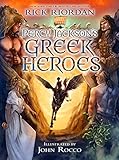Want To Help The Environment? Rinse Your Favorite Jeans with 'CatClo'
Language
Reading Level
Listen to Article
If you are among the majority of people that would like to help clean our environment but have no idea how to get started, you are in luck. That's because University of Sheffield scientist Tony Ryan and London College of Fashion artist and designer Helen Storey have come up with an ingenious solution that will turn us all, into efficient walking air filters.
Their brilliant invention is a laundry additive called Catalytic Clothing (CatClo), which when mixed in with normal detergent turns your clothes into magnets for some of our worst air pollutants including, Nitrogen oxide (NOx). Emitted from conventional gas powered vehicles it is believed to be the cause of many respiratory ailments including, asthma.
While it may sound like too good to be true, the secret behind CatClo's magical ability is grounded in chemistry. When added to a laundry washing cycle, it coats the clothes with nano particles of Titanium oxide (TiO2) - A photo catalyst that reacts with the sun's Ultra-Violet rays to create highly reactive electrons called hydroxyl radicals and super-oxide ions. These electrons aggressively combine with air pollutants like Nitrogen oxide and turn them into harmless odorless and colorless nitrates. The pollutants that stick to the clothing and for some reason are unable to break down (Something that happens already) simply wash off during the next laundry cycle.
Of course, just like any other major undertaking, this too 'Takes A Village' - So while one person wearing a CatClo coated garment can make a difference, thousands doing it collectively will be what really makes the required impact on cleaning our air pollution.
While the product is still undergoing safety tests and is not expected to be available for another two years, the researchers did use it to coat a 46-ft sculpture named Wendy, that stood on display outside New York's Museum of Modern Art, earlier this year. Over the 10-week period Wendy not only pleased the visitors, but also, soaked up Nitrogen oxide equivalent to that produced by 260 cars!
CatClo is currently also being tested at the Manchester Science Festival. The Catalytic Clothing, Field of Jeans exhibit features 40 pairs of catalyzed denim jeans that have been planted in giant seed boxes - highlighting the similarities between plants and CatClo clothing. Given that the coating seems to be most effective on cotton, the results, which will be tested when the event ends on November 4th, should be even better that those produced by Wendy.
Though this idea of coating it on clothing is a first, using Titanium Oxide as an air-purifier, is not new. it is already being used to coat roof tiles and even, pavements in Germany. Additionally, some Chinese researchers are in the final stages of introducing self-cleaning clothes using a similar chemical reaction. Now, if only they could combine their technology with CatClo, we would have clothes that clean the environment and themselves - A 'win-win' for all!
Resources: gizmag.com, theweek.com, catalytic-clothing.org
Cite Article
Learn Keywords in this Article
70 Comments
- smittywermanabout 8 yearsnow i wont have to deal with laundry
- Scienceboss2382about 8 yearsWhat a way to saved the earth and environment.
- wickedover 9 yearsThis is a great idea
- Siooraaover 9 yearsI think a great movie could come out of this so why don't you put it on line??!!
- diamondkidover 9 yearsWhen I looked at the cover at the video it was....LOL.
- girlkalmost 10 yearsOMG
- aphphilippinesalmost 10 yearsI like the idea for a 'clean' sculpture!Very convenient!
- pp12345678over 10 yearsI be scary
- pp12345678over 10 yearsIbe scary too
- eweseeabout 12 yearsvery cool articel




